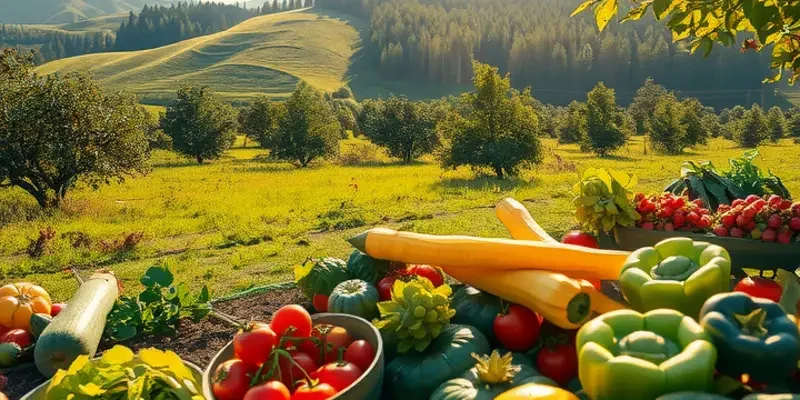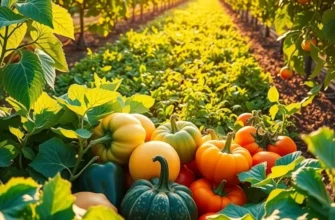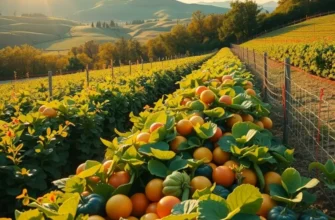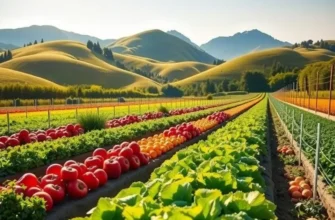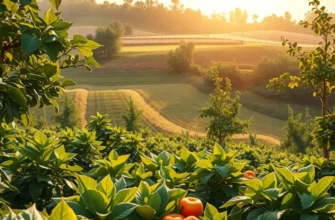The food choices we make have far-reaching impacts on the environment. Embracing regenerative foods is not just about nourishing ourselves; it’s about revitalizing and supporting ecosystems. By focusing on foods that enhance soil health, promote biodiversity, and encourage climate resilience, we can all contribute to making the planet a better place. This guide will help you navigate the landscape of regenerative agriculture and inspire you to make food choices that support the environment.
Understanding Regenerative Agriculture

Regenerative agriculture is an innovative approach that aims to nurture the earth while producing nutritious food. At its core, this method embraces practices that enhance and restore ecosystem health and resilience.
One fundamental principle is improving soil health through comprehensive strategies. Crop rotation plays a pivotal role in this, breaking pest and disease cycles and enhancing soil fertility. By alternating crops, farmers prevent the depletion of specific nutrients and increase soil organic matter, which acts like a sponge, enhancing water retention and reducing erosion.
Permaculture, another regenerative technique, focuses on designing landscapes that mimic natural ecosystems. It encourages biodiversity, fostering a symbiotic relationship between plants and wildlife. This method often integrates layers of vegetation, from ground cover plants to a canopy of trees, creating a self-sustaining ecosystem that requires minimal intervention.
Cover crops are invaluable in regenerative practices, protecting and enriching the soil when primary crops are not growing. They prevent soil erosion, suppress weeds, and enhance soil biodiversity. Cover crops like clover or vetch fix nitrogen from the atmosphere, reducing the need for synthetic fertilizers and promoting a healthier soil microbial ecosystem.
The impact of these methods extends beyond the farm. Soil health is directly linked to water conservation. Healthy soils capture rainwater efficiently, alleviating the pressure on water resources and diminishment typical in conventional agriculture. This efficient water use is crucial in areas threatened by climate change, where droughts and erratic rainfall patterns are prevalent.
Biodiversity thrives under the principles of regenerative agriculture. Diverse plant and animal life contribute to ecosystem resilience, reducing the reliance on chemical pesticides and fertilizers. This approach helps restore habitats for pollinators, such as bees and butterflies, which are essential for balancing ecosystems and ensuring food security.
By fostering such a delicate and sustainable balance, regenerative agriculture not only contributes to environmental health but also produces food that is nutrient-dense. Crops grown in rich soils often contain higher levels of vitamins, minerals, and antioxidants. For individuals embracing eco-friendly lifestyles, choosing foods from regenerative sources aligns with principles of health and sustainability.
Moreover, this agricultural practice strengthens community ties and food systems by supporting local farmers and reducing carbon footprints through local consumption. This is an important aspect of reducing the overall impact on the environment and encouraging community-driven food models.
For those interested in further enhancing their sustainable living journey, effectively storing produce can also minimize waste and preserve nutrient quality. You can explore practical methods on how to implement these in your kitchen by learning about eco-smart kitchen storage. Reducing waste complements the cycles of regeneration seen in nature, creating a harmonious loop between production and consumption.
Overall, understanding and supporting regenerative agriculture is vital. It not only nurtures our planet but also our bodies and communities, making it a pivotal factor in transforming food systems for sustainability.
Practical Tips for Choosing Regenerative Foods
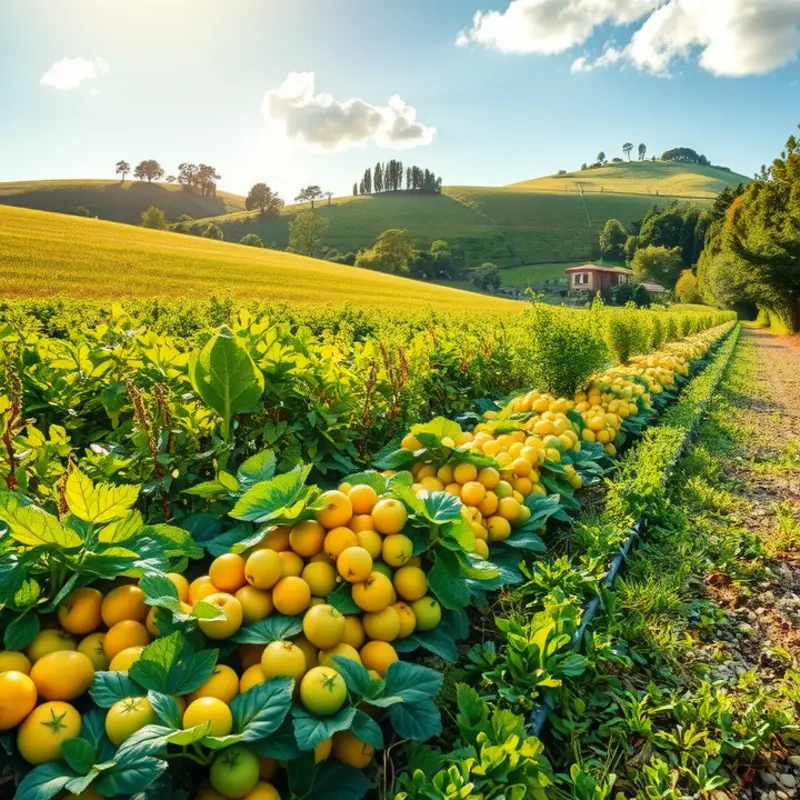
To ensure your food choices positively affect the environment, consider these practical tips for sourcing and selecting regenerative foods. Start by identifying seasonal produce in your area. Seasonal foods often require fewer resources to grow due to favorable growing conditions, which reduces environmental impacts. For instance, in many temperate climates, autumn brings a bounty of root vegetables like carrots, beets, and potatoes, along with cruciferous vegetables like kale and cabbage.
Local farmers’ markets are excellent venues for purchasing regenerative foods. These markets typically feature produce from nearby farms, reducing the carbon footprint associated with transporting goods over long distances. Visit them to understand what’s in season and ask vendors about their farming practices. Engage with farmers to learn if they employ soil-enhancing practices such as crop rotation, cover cropping, or reduced tillage, all key components of regenerative agriculture.
Grocery stores are convenient but require vigilance. Look for foods marked with certifications like Organic or Regenerative Organic Certified. These labels often indicate adherence to sustainable practices but always take a moment to research what each certification truly stands for. Certifications can vary widely in their environmental criteria, so understanding these differences empowers you as a consumer.
Don’t overlook the importance of reading labels carefully. Labels can provide insights into the origin of ingredients and their production process. Ingredients sourced from regenerative practices will often be highlighted, but this is not always guaranteed. Whenever possible, choose brands that clearly document their sustainability efforts and environmental commitments on their packaging or websites.
Another approach is to engage directly with producers, either in person at markets or through online platforms. Open communication channels to discuss their sustainability practices. Your interest alone signals a growing consumer demand for eco-friendly food production, encouraging more producers to adapt.
If you’re interested in minimizing your ecological footprint further, integrating eco-smart kitchen storage practices can complement your regenerative food choices. Explore how to efficiently store and preserve your foods to further enhance your environmentally-friendly lifestyle.
Choosing regenerative foods isn’t just about personal health; it’s about preserving our planet’s health. With awareness and proactive choices, we can contribute to a resilient, sustainable food system that nourishes both people and the planet. By incorporating these practices into your routine, you’ll be well on your way to making a positive environmental impact.
Final words
Choosing regenerative foods not only benefits your health but also plays a crucial role in restoring our planet. By aligning your diet with regenerative practices, you contribute to a more sustainable food system and nurture the ecosystems around us. Remember, every meal is an opportunity to make a positive impact—each thoughtful choice can help the environment thrive. Let your commitment to regenerative foods be the driving force behind a healthier you and a healthier planet.

